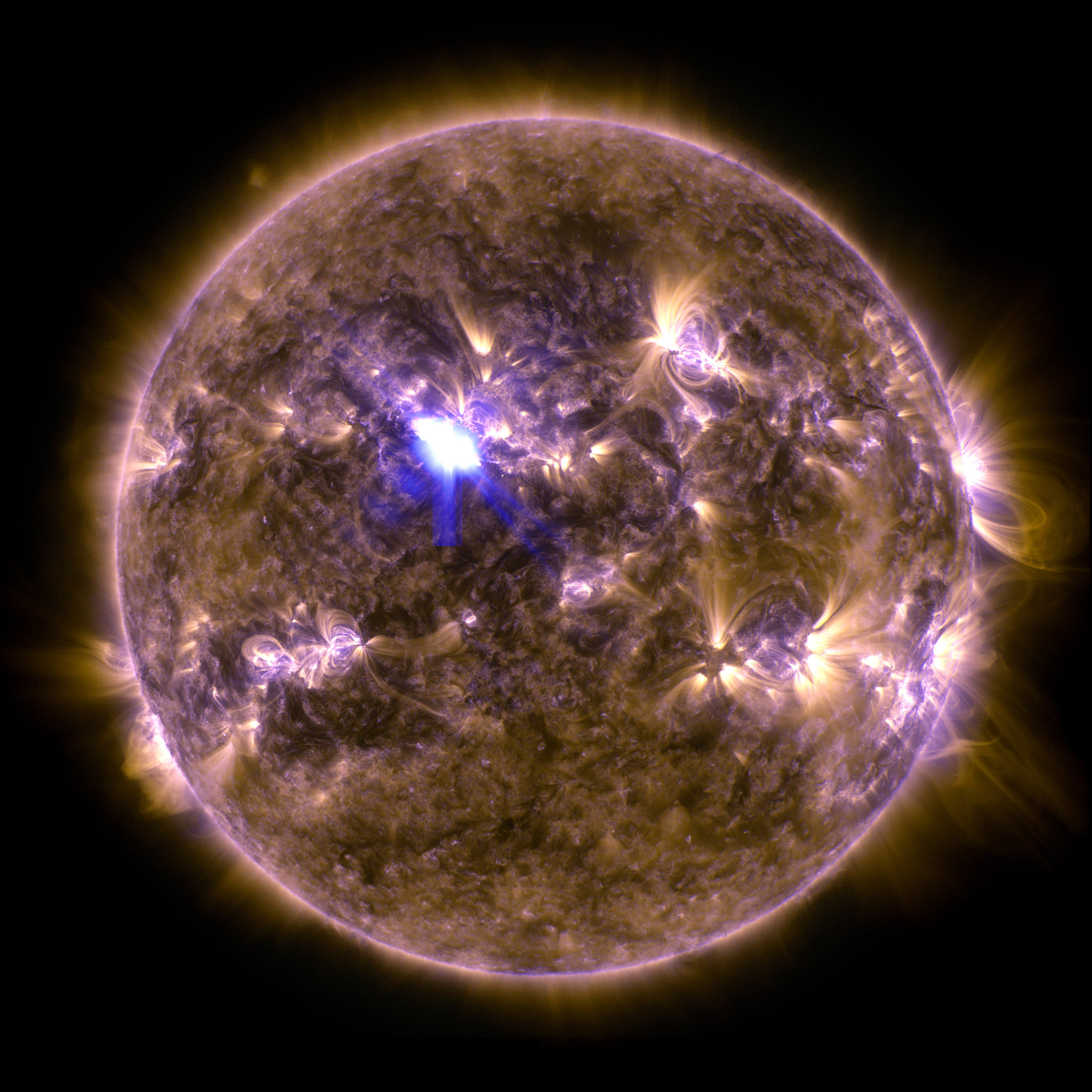Sun Show: See Dramatic Solar Views in Live Webcast Today

You can get a new perspective on the sun today (April 18), thanks to a special webcast devoted to our closest star.
The online Slooh Space Camera — which broadcasts footage of the night sky and celestial objects from professional-quality telescopes around the world — will host a free webcast featuring expert commentary and live views of the sun at 3 p.m. EDT (1900 GMT).
Slooh will be using views from a solar observatory in Arizona, and you can watch the solar show webcast live here on SPACE.com. During the show, experts will use the telescope to hunt for solar flares and sunspots, which should be on the rise over the coming months as our star ramps up toward a predicted activity peak later this year.
"The good news is that, sometime this year or next, and probably several times, solar outbursts will be so high that the northern lights will be seen all the way to the central United States, and maybe even farther south than that," Bob Berman of Astronomy Magazine said in a statement.
"Meantime, almost nothing is more fun than looking at the sun directly through Slooh's solar telescope and watching the violence unfold firsthand," Berman added. "This is what Slooh will be doing [Thursday] — and, with a panel of commentators, the public is invited to come take a look for themselves."
The sun's activity peak, called solar maximum, seems to have been somewhat "delayed and prolonged from its usual 11-year cycle," according to officials from Slooh. But the sun has been stirring lately.
The most powerful solar flare of 2013 erupted from Earth's closest star last week. Although it was only an M-class flare — which are considerably weaker than the most powerful type, X-class flares — the solar burp caused a short-lived radio blackout on Earth.
Get the Space.com Newsletter
Breaking space news, the latest updates on rocket launches, skywatching events and more!
As the sun nears solar maximum for the current cycle, known as Solar Cycle 24, an increased number of solar flares are to be expected, scientists say.
WARNING: NEVER stare directly at the sun with your unaided eyes or through a telescope or binoculars without protection; severe eye damage, including permanent blindness, can result. Astronomers use special solar filters to safely observe the sun.
You can can also follow the solar webcast live via the Slooh Space Camera website here.
Follow Miriam Kramer on Twitter and Google+. Follow us on Twitter, Facebook and Google+. Original article on SPACE.com.
Join our Space Forums to keep talking space on the latest missions, night sky and more! And if you have a news tip, correction or comment, let us know at: community@space.com.

Miriam Kramer joined Space.com as a Staff Writer in December 2012. Since then, she has floated in weightlessness on a zero-gravity flight, felt the pull of 4-Gs in a trainer aircraft and watched rockets soar into space from Florida and Virginia. She also served as Space.com's lead space entertainment reporter, and enjoys all aspects of space news, astronomy and commercial spaceflight. Miriam has also presented space stories during live interviews with Fox News and other TV and radio outlets. She originally hails from Knoxville, Tennessee where she and her family would take trips to dark spots on the outskirts of town to watch meteor showers every year. She loves to travel and one day hopes to see the northern lights in person. Miriam is currently a space reporter with Axios, writing the Axios Space newsletter. You can follow Miriam on Twitter.











